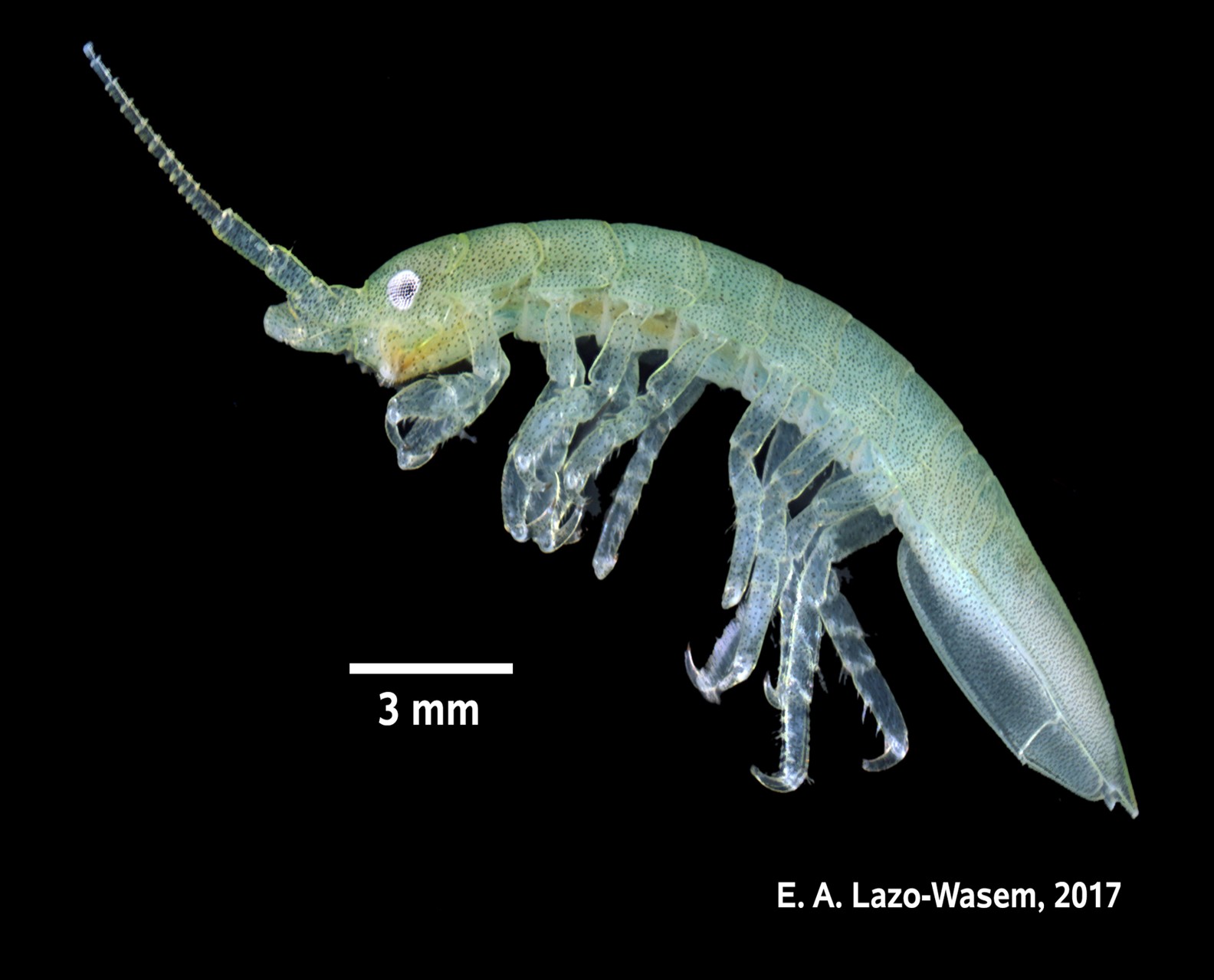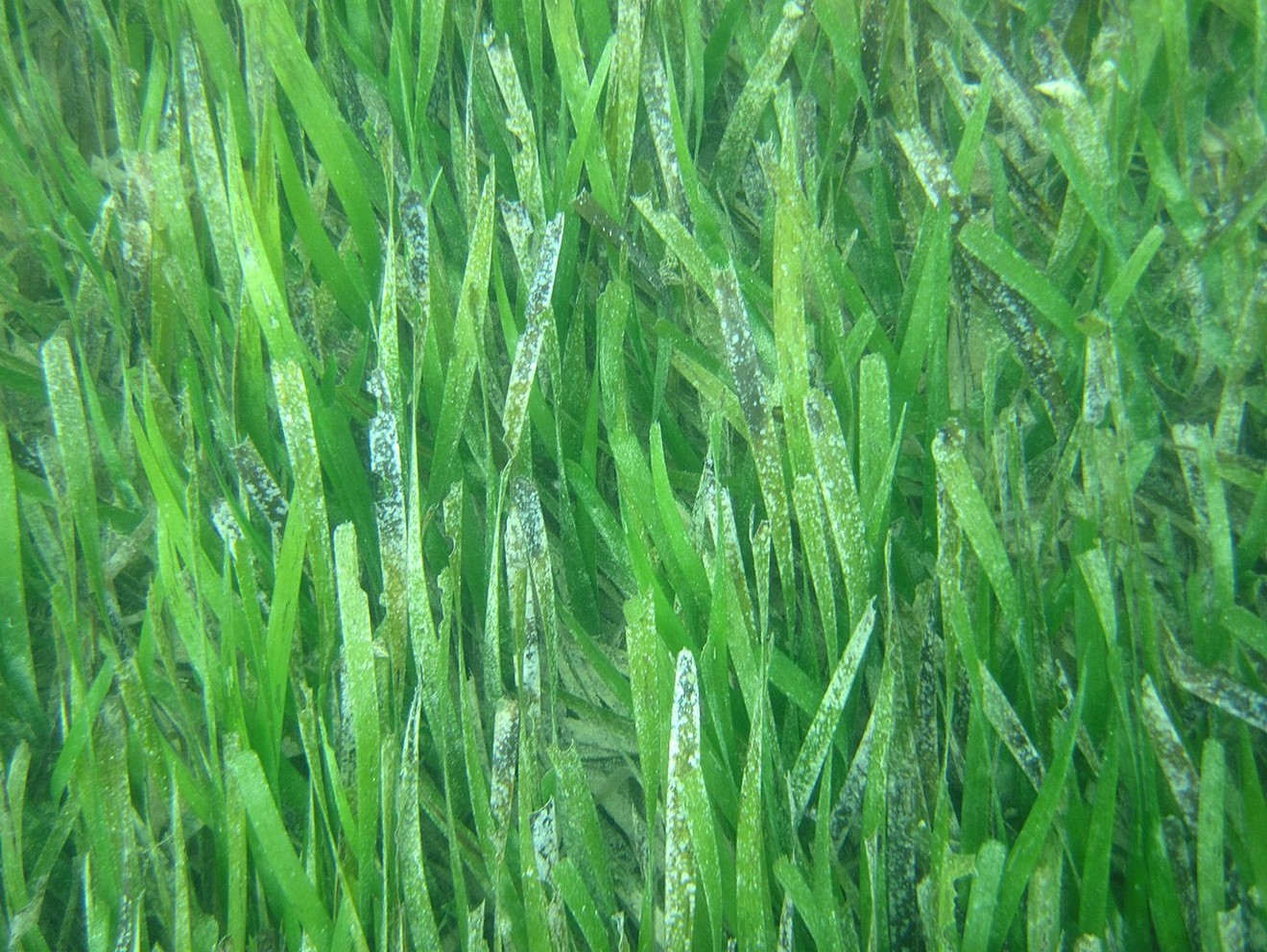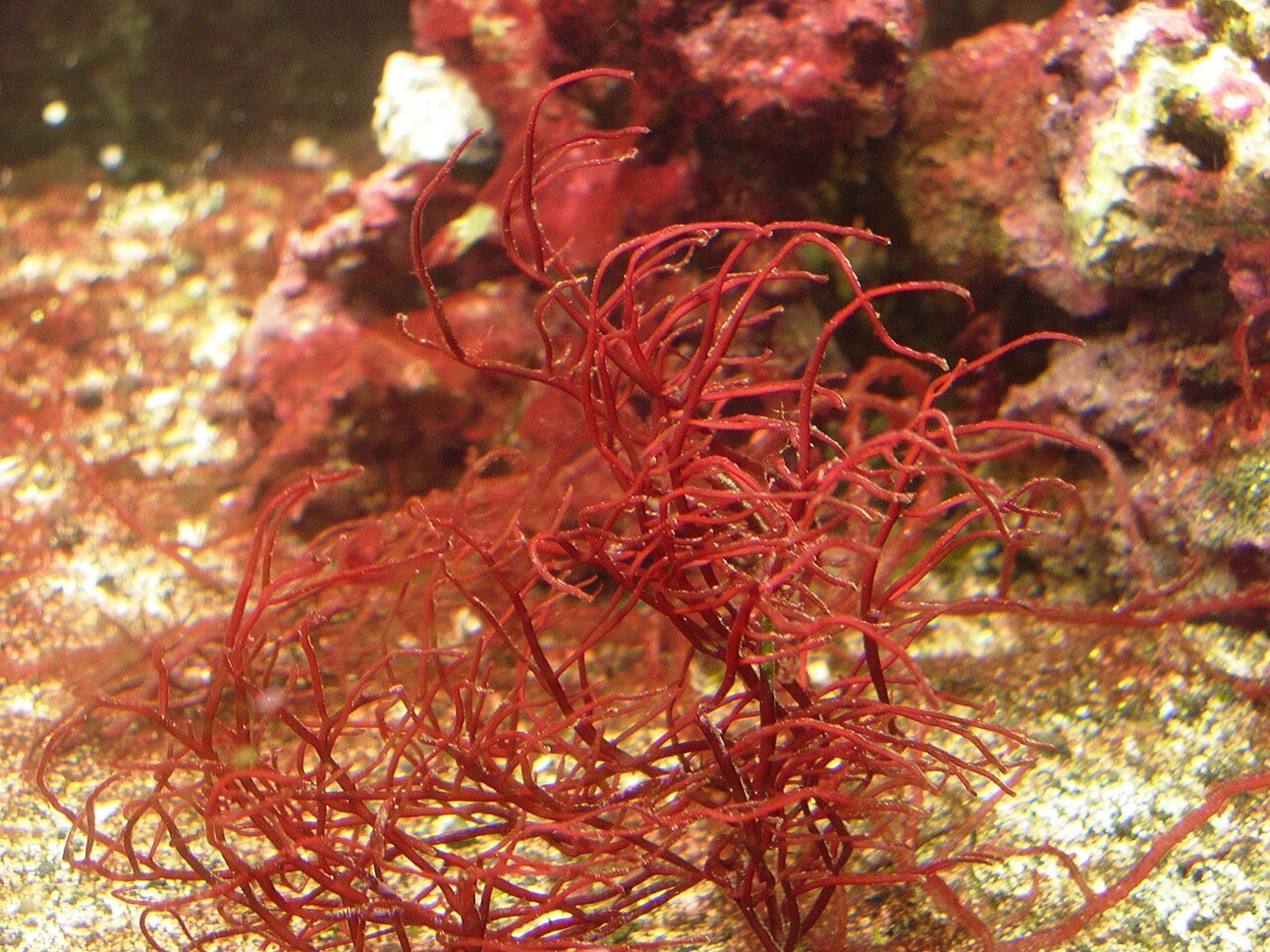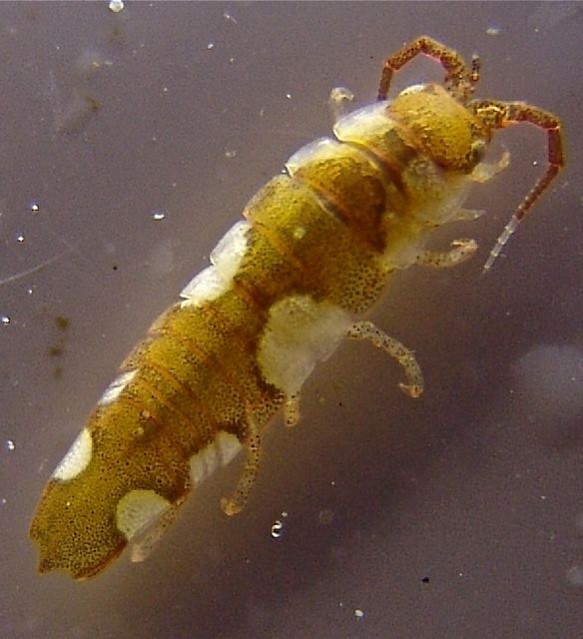
Credit: Yale Peabody Museum, CC0, via Wikimedia Commons
When we think of pollination, we usually think of bees, bats or other flying foragers.
They visit male flowers to collect nectar and get covered in sticky pollen, which they carry to female flowers, in search for more nectar.
Marine plants also reproduce with pollen, but scientists thought water movement carried it from one plant to another. Then researchers discovered what they called “the bees of the seas.”
Small crustaceans crawl over the male flowers of seagrass to eat a nutritious substance produced by the flower and get covered in goo containing pollen—which they transfer to female flowers.
Seagrass is a land plant that evolved to live in the sea a hundred million years ago; maybe it’s not surprising to find it has a pollinator like other land plants.
But scientists have found another pollination relationship that may be far older.
Red algae are eukaryotes, not plants, having evolved separately and much earlier. Researchers recently discovered a microscopic creature called an isopod that eats organic material from the algae, gets coated in sticky spermatia, a kind of protopollen, and transfers it from male to female algae.
This discovery has scientists rethinking marine pollination. It may have evolved a billion years ago, one of the earliest sexual reproduction processes on Earth.
If so, what other Earth processes may be far older than we imagined?
Background
Synopsis: The concept of pollination conjures visions of flowering trees and plants with pollinators buzzing around blossoms. Studies show that marine animal-mediated fertilization also occurs for seagrasses. And a recent study demonstrates that some red algaes are “pollinated” by crustaceans, shaking the dogma that this type of fertilization was a unique trait developed during the coevolution of flowering plants and insects—red algaes and their fertilizers have been around much longer. Have other mutualistic relationships like this occurred throughout geologic history that we have yet to discover?
- When we think about pollination, we typically think of terrestrial flowering plants that depend on insects and other animals for fertilization, but what about aquatic plants?
- Terrestrial flowering plants (angiosperms) provide a source of food or shelter for their pollinators that return the favor by transporting pollen from male to female parts of the plants to make reproduction possible.
- Wind and precipitation can also cause pollination to occur.
- Starting in the Early Cretaceous (140 million years ago), angiosperms coevolved with their pollinators in this well-known mutualistic relationship (ED-061 Stories in Pollen).
- Some flowering plants, known as seagrasses, evolved to live in shallow aquatic settings soon afterward. For decades, researchers believed that water movement alone provided all pollination services for these species. But maybe not.
- About a decade ago, a marine grass researcher noted that every time she collected specimens of the tropical marine angiosperm Thalassia testudinum, they were covered with tiny marine worms and crustaceans.
- On sharing this with a marine biologist colleague, they wondered whether the animals were actually pollinating the seagrass, so they set up several experiments in still water aquariums that controlled the exposure of female flowers to (1) male flowers with and without fauna and to (2) fauna in the absence of male flowers.

Thalassia testudinum is a marine angiosperm that is also known as turtle grass. It is common in shallow-water photic zones of the Caribbean and Gulf of Mexico and is pollinated in part by small marine worms, crustaceans and other invertebrates.
Credit: James St. John, CC BY 2.0, via Wikimedia Commons - They noted that the male flowers of the seagrass only open up at night, blooming within 0.5 to 1 in (1–2 cm) of the seafloor and releasing their pollen inside a gooey, nutritious substance called mucilage.
- Underwater video showed a variety of crustaceans, polychaetes, and amphipods approaching open male flowers to forage, becoming covered in the pollen-laden mucilage.
- During the day, female flowers open up to expose their tentacle-like stigmas, and the invertebrates drop even closer to the seabed to feed from and shelter in them, transferring pollen to the stigmas, completing the pollination cycle.
- In 2016, the scientists published the first record of marine pollination of seagrass by marine animals and dubbed them the “bees of the seas” while still recognizing the movement of seawater as a principal transport mechanism for the pollen.
- But five years later, other researchers were astounded to find that seagrasses weren’t the only marine organisms with their fertilization mediated in part by marine animals. Seaweeds like red algae, which are eukaryotes not plants, also undergo a fertilization process similar to pollination.
- Seaweeds and seagrasses come from different kingdoms of organisms.
- Seagrasses are part of the plant kingdom, having evolved from terrestrial flowering plants around 130 million years ago. They are aquatic flowering plants that produce pollen that fertilizes female flowers.
- Seaweeds are not part of the plant kingdom, they are eukaryotes. They are made of chlorophyll-containing red, brown, and green macroalgaes that evolved more than 800 million years ago. They produce male gametes called spermatia which, similar to pollen, must be united with a female gamete pereiopod to accomplish reproduction.
- In 2021, scientists published their findings about the relationship of a red alga called Gracilaria gracilis and a group of crustaceans known as isopods.

Gracilaria is a genus of red algae (Rhodophyta) notable for its economic importance in the production of the hydrocolloid agar that is used in biological experiments.
Credit: Emoody26, CC BY 3.0, via Wikimedia Commons- Most algaes release their gametes into the water column, where they unite for reproduction. But the spermatia of these particular algae do not have flagella, so they cannot swim, while the female gametes are not released into the water column and thus have less opportunity to be fertilized.
- These red algae grow in tide pools, where researchers observed that isopods tended to accumulate on them.

Top view of the isopod I. balthica from Greater Cumbrae, Scotland. These “bees of the seas” can grow as large as 1.6 in (4 cm).
Credit: Mark Blaxter, public domain, via Wikimedia Commons - Experiments showed that fertilization success was enhanced twenty times in the presence of isopods in aquaria.
- Under a microscope, they could see that the tiny crustaceans were covered in the sticky male spermatia, transferring them to the female pereiopods as they foraged for food and shelter.
- The isopods are rewarded for their reproductive assistance with both shelter and food in the form of a tasty microalga that grows on the G. gracilis.
- This discovery raises the question of whether mutualistic relationships of “pollination” mediated by animals was occurring before flower-bearing plants coevolved with pollinating insects 140 million years ago (Cretaceous).
- Isopods have been around for 300 million years (Permian), while the phylum of arthropods has been around for 550 million years (Precambrian).
- Red algaes have been on Earth for more than a billion years. Could other organisms have assisted in their reproductive processes in the deep past?
- When did animal-mediated fertilization evolve for algae? Did it occur in the millions of years before angiosperms evolved?
- Did “pollination” evolve independently multiple times?
- What other mutualistic relationships existed among organisms through time?
- Do we need to rethink the concept of pollination?

